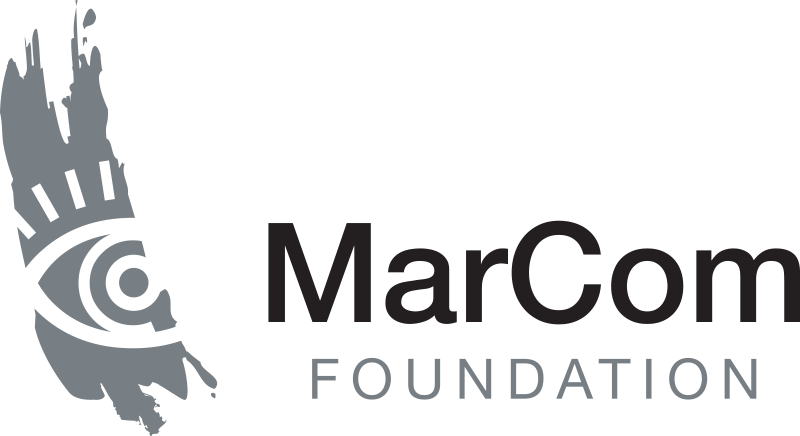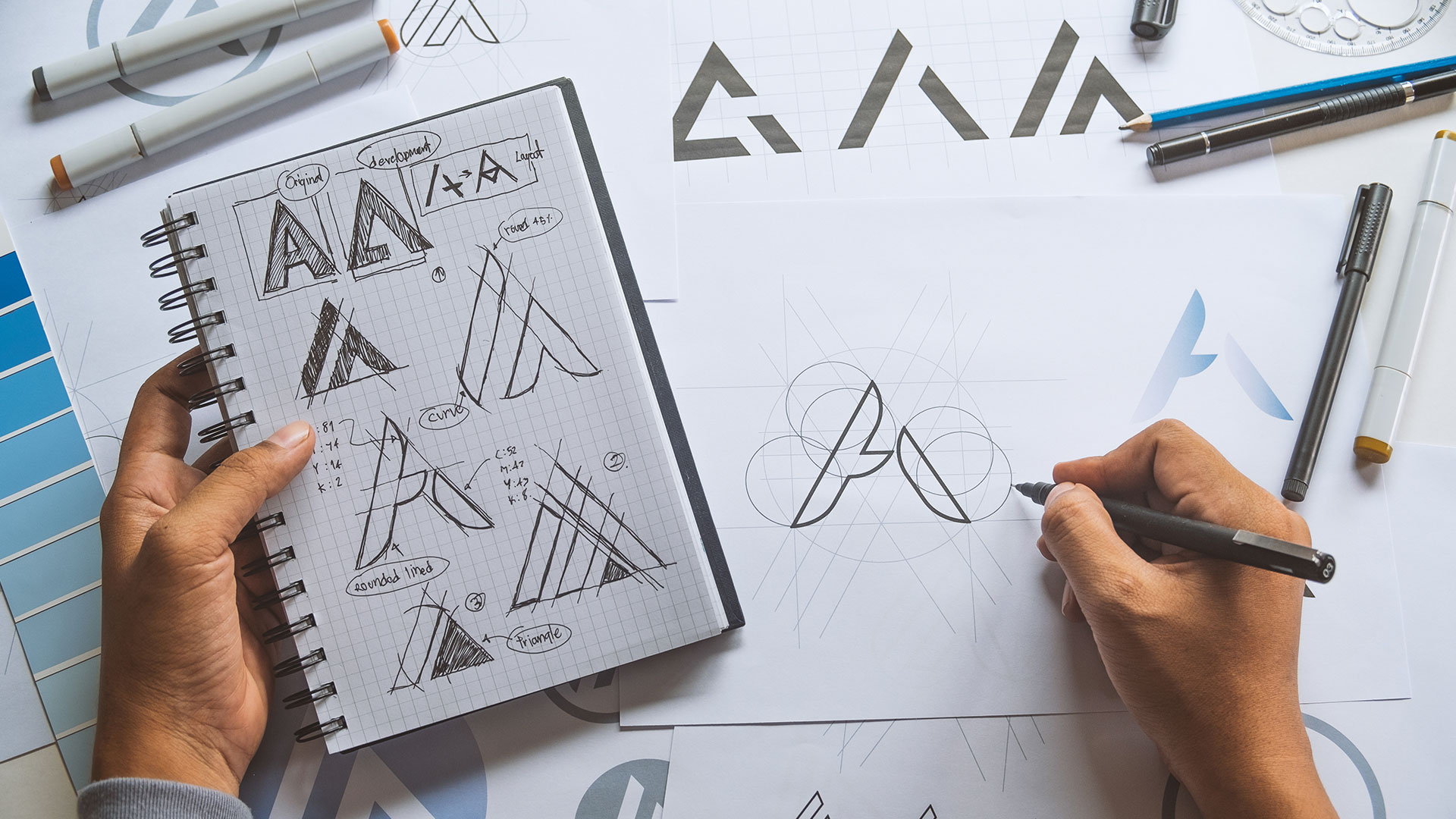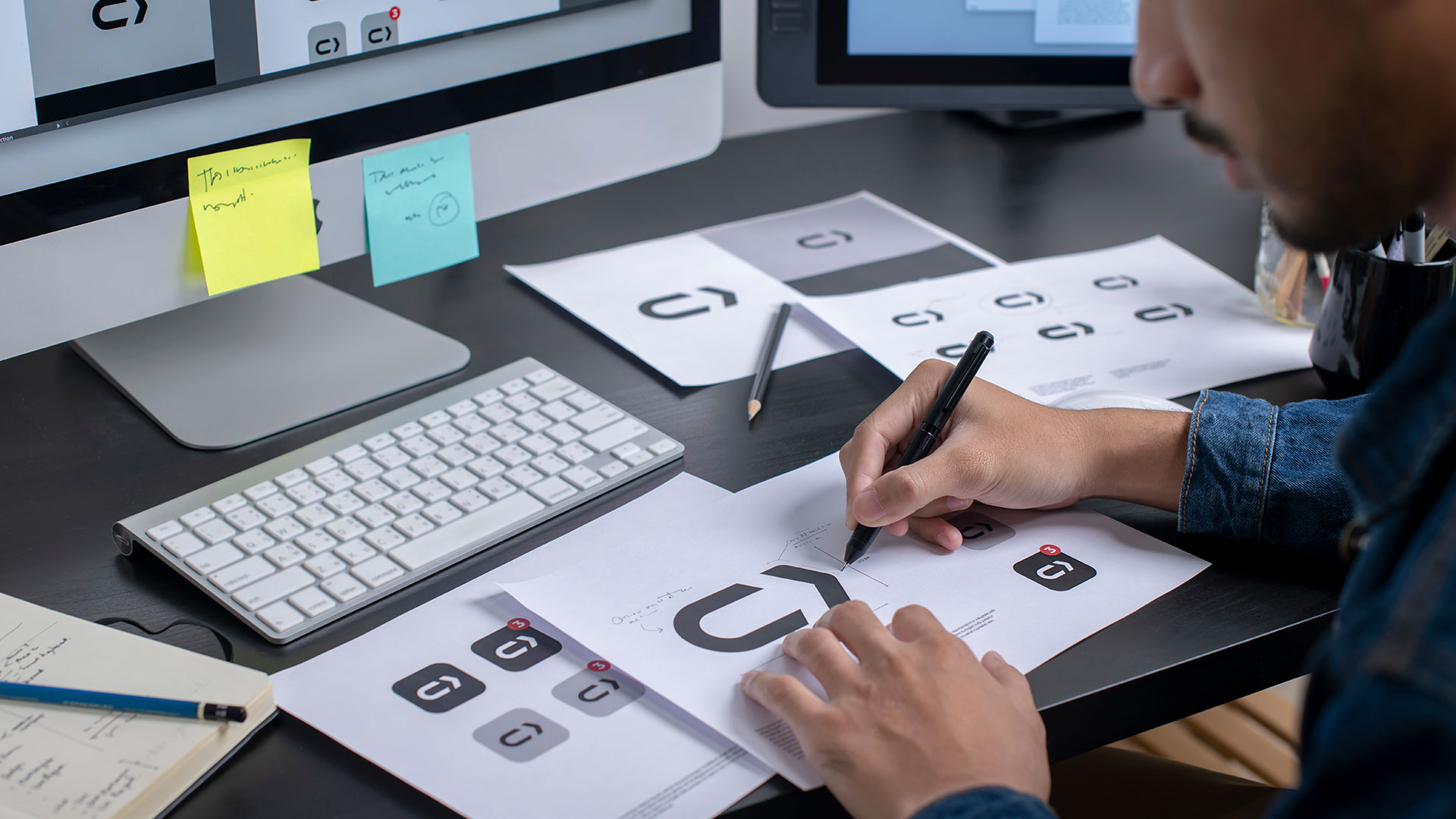In the vast landscape of branding, few elements are as crucial and recognizable as a well-designed logo. It’s the visual cornerstone of a company’s identity, encapsulating its values, personality, and essence in a single symbol. As CEOs, business owners, executives, and entrepreneurs, you understand the power of branding and the impact a logo can have on your audience. In this guide, we’ll explore the key principles behind designing a logo that not only stands the test of time but also resonates deeply with your target audience.
1. The Importance of a Well-Designed Logo
Your logo is the face of your brand, the first point of contact with your audience. It’s the emblem that symbolizes your company’s mission, values, and vision. A well-designed logo communicates professionalism, trustworthiness, and credibility, setting the tone for your entire brand experience. Think about iconic logos like Nike’s swoosh, Apple’s bitten apple, or IBM’s stripes—they instantly evoke recognition and association with their respective brands.
2. Simplicity, Iconicity, and Timelessness
The best logos are often the simplest. They possess a clarity and elegance that make them instantly recognizable, even at a glance. Consider the Nike swoosh—a single, fluid stroke that embodies movement and dynamism. Simplicity ensures that your logo remains memorable and versatile across various platforms and applications. Moreover, iconic logos have the remarkable ability to transcend trends and fads, remaining relevant and impactful for decades to come.
It’s crucial to distinguish between a monogram and a logo. While a logo may incorporate a monogram along with a typeface, it’s often the monogram or icon that becomes the primary identifier for a company. Hence, investing in a simple yet conceptually robust shape that embodies your business’s core values and purpose becomes imperative.
3. Versatility Across Platforms and Environments
In today’s digital age, your logo must seamlessly adapt to a myriad of mediums and environments. Whether displayed on a website, a business card, or a billboard, your logo should retain its integrity and legibility. Versatility is key—think scalable vector formats that maintain crispness and clarity across different resolutions. The adaptability of your logo ensures consistent brand representation, regardless of the context in which it’s encountered.
Effective brand management is paramount when introducing a new brand to the marketplace. Prospective customers assign value to your brand even before making a purchase decision. Inconsistencies or fractures in your brand’s appearance across different platforms can lead them to reconsider engaging with your business. Hence, maintaining a simple, adaptable brand that maintains consistency across various mediums and channels is crucial for establishing trust with your target audience.
4. The Versatile Logo Family System
A strong logo is the nucleus of a broader visual identity system—a cohesive framework that encompasses various iterations, submarks, and applications. The logo family system allows for flexibility and creativity, empowering your brand to communicate effectively across diverse channels and touchpoints. From social media avatars to product packaging, each element within the logo family reinforces your brand’s identity while catering to specific audience preferences and contexts.
To enhance a logo’s versatility, it’s wise to invest in creating vertical and horizontal applications, seals, patterns, and other brand elements. These adaptations enable your logo to seamlessly integrate into any environment frequented by your target audience. In today’s dynamic landscape, possessing a flexible brand that effortlessly adapts to diverse environments is a significant advantage, ensuring your logo garners attention wherever it appears.
5. Strong Conceptual Concepts
Behind every great logo lies a compelling story—a narrative that resonates with your audience on a deeper level. A strong conceptual concept serves as the foundation of your logo, sparking curiosity and engagement among your target demographic. Consider the FedEx logo, where the negative space between the “E” and the “x” forms an arrow—a subtle yet powerful symbol of speed, precision, and forward momentum. Concept-driven logos invite interpretation and dialogue, fostering meaningful connections with your audience.
Integrating strong yet simple conceptual elements into logo design is highly advisable. However, overcomplicating this crucial step can lead to confusion and inconsistency in the final design. Therefore, it’s recommended to limit the primary conceptual elements to a maximum of three, allowing the audience to discover them organically or through engagement. These conceptual elements enhance brand recall and leave a lasting impression on the audience. Additionally, ensuring that the elements are simple and relatable to everyday experiences increases the likelihood of your logo being remembered by your target audience.

6. Relevant Color Palette
Color psychology plays a pivotal role in logo design, influencing emotions, perceptions, and brand associations. The choice of colors should reflect your brand’s personality and resonate with your target audience’s preferences and sensibilities. From the vibrant red of Coca-Cola to the calming blue of Facebook, each hue conveys a distinct mood and message. A harmonious color palette enhances brand recognition and fosters an emotional connection with your audience, reinforcing your brand’s identity and values.
Conducting a comprehensive color study prior to selecting hues is vital to ensuring your brand resonates with your target audience. Therefore, conducting thorough research on your target demographic before conceptualizing your brand is essential. This ensures that your color choices align with your audience’s preferences and avoid potential conflicts with what they find unappealing. For instance, if your product primarily targets a male audience, opting for a powder blue color may not be optimal, regardless of its visual appeal. It’s crucial to remember that you’re not designing a logo for personal preferences but for your audience’s sensibilities. Many business owners or executives overlook this distinction, allowing personal tastes to overshadow audience preferences, leading to suboptimal results when the brand is introduced to the market.
7. Research and Data in Logo Design
Behind every successful logo lies a wealth of research and data-driven insights. Understanding your target audience—their demographics, psychographics, and behaviors—is paramount to crafting a logo that resonates authentically. Market research, focus groups, and competitive analysis provide invaluable guidance, helping you decipher trends, preferences, and pain points within your niche. By leveraging data-driven insights, you can make informed design decisions that resonate with your audience and elevate your brand above the competition.
Enlisting the services of a branding agency or seasoned brand designers is crucial because they dedicate the necessary time to conduct thorough due diligence. This ensures that the final logo design perfectly aligns with the sensibilities of your specific target audience. It’s imperative to ask pertinent questions when engaging with a logo design agency or brand designer about their creative process. If research and discovery aren’t integral components of their design approach, it’s advisable to explore other options that prioritize this crucial step in your brand-building journey.
Conclusion
Designing a logo that resonates with your target audience is both an art and a science—a delicate balance of creativity, strategy, and empathy. As CEOs, business owners, executives, and entrepreneurs, you possess the vision and ambition to propel your brand to new heights. By adhering to the principles outlined in this guide—simplicity, versatility, conceptual thinking, and research—you can create a logo that not only captures the essence of your brand but also captivates the hearts and minds of your audience. Remember, your logo is more than just a symbol—it’s the embodiment of your brand’s story, values, and aspirations.
Schedule a free consultation with our collaborating branding experts and embark on a journey of discovery, creativity, and transformation. Together, let’s design a logo that leaves a lasting impression and sparks a meaningful connection with your audience.
References
- Armin Vit, “Brand New”
- Michael Evamy, “Logo Design Love”
- David Airey, “Logo Design Handbook”






